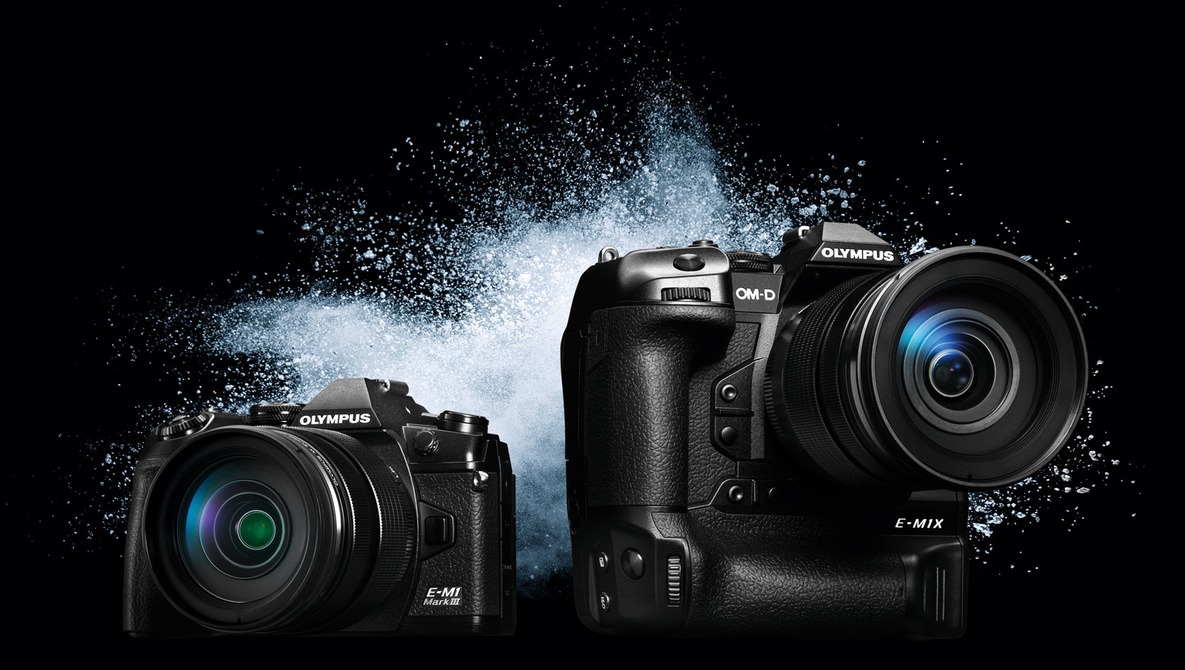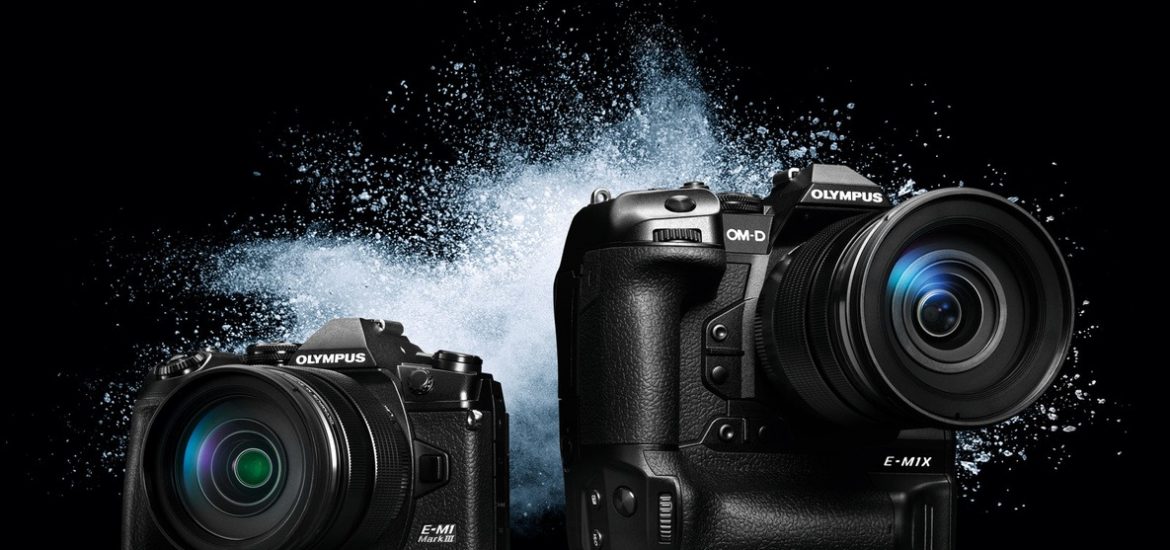
Artificial Intelligence (AI) has leapt into photography, and as usual, Olympus cameras lead the way with these new technologies. Great for enticing new photographers into our art, it simplifies capturing images. However, as AI takes its first big steps into photography, will it boost overall sales?
For a previous article, I interviewed wildlife photographer Rob Cottle, who emphasized the good stuff about the technology available in cameras. I agree with him. Tech makes photography accessible to more people by easing the introduction to photography. In turn, that helps keep our art alive. It also enables accomplished photographers to get shots that were previously impossible to achieve.
But, how much of an impact will AI have on photography? To answer this, we must start by taking a step back and considering new tech in the context of the camera’s recent history.
The Boom
The sales of advanced camera systems in the 2000s and early 2010s were huge, but they were mainly driven by ever-increasing pixel counts. This always struck me as odd. After all, you only need around 10-megapixels for a photo-quality 20×30″ print and far less for sharing on social media. So, for accomplished photographers who tried to get everything right in the camera, those extra microscopic dots of color meant little more than greater file sizes.
Don’t believe me? Go onto Flickr or 500px and search for images shot with any old 10-megapixel camera, and you’ll find some great photos that stand up to today’s standards. Of course, I am just referring to the pixel count here. Those old cameras had less dynamic range than contemporary ones because technology has moved on. Consequently, there are things you can achieve with today’s cameras that were unthinkable 10 years ago.
On the other side of the argument, more pixels did give more scope for cropping, although cropping is rarely a good substitute for getting closer to the subject.
Fewer pixels and, consequently, larger photosites on the sensor, would have equated to lower pixel density and so a greater dynamic range and noise control. Unfortunately for photography, higher pixel counts were easy to market, especially to naïve novices.
The Crash
The success of that advertising was relatively short-lived. The camera market grew too big and then crashed. This was widely and correctly blamed on the introduction of cameras into smartphones. However, there was more to it than that.
Beginner photographers were promised great photos by buying this or that DSLR camera. But photographers required both the skills to operate the camera and the eye to compose a great shot. Flashier cameras did nothing to improve their photography unless their owners took the time and the money to learn the skills, which many didn’t. Then, when their photos were disappointed, they were taken in by the pixel count lie. They upgraded their kit, but of course, their photographs didn’t improve. I wonder how many old DSLRs now sit collecting dust with their mode dials still on auto as a consequence.
The speed of photographic technological change slowed. Sure, there were some improvements in what cameras offered, but fewer ground-breaking innovations appeared compared to the first 15 years of digital photography. Taking photographs didn’t become any easier for the beginner. Indeed, even the professional, who was more likely to know how to use the manual controls of their camera, didn’t need to upgrade; their cameras were good enough. That was until pro-grade mirrorless cameras appeared on the market.
Is Upgrading Worthwhile?
The cameras I bought five years ago still do everything I need of them, and I make a living from photography. Should I spend money updating my kit? If not, why would a beginner or intermediate need to upgrade?
Maybe AI is the juicy worm on the hook that will tempt us. Why? As I said at the start, AI can make photography more accessible to beginners and give us experienced photographers a higher percentage of successful images.
But will those who were disheartened and left their first or second-generation DSLRs to gather dust take another shot at becoming photographers? Will the miracle inbuilt software promise to make every camera owner into the latest incarnation of Ansel Adams or David Bailey? Probably not, but maybe AI can give them a far larger nudge in the right direction than higher pixel counts ever could.
The problem that manufacturers will face is persuading consumers that the upgrade is worth it. Nevertheless, big advancements in camera technology are not just around the corner, they are here. Camera and software development are focussing on AI, and it is something to embrace.
Where AI Is at Now
Some might say that the term “AI” in photography stretches the definition. But, what we are seeing in cameras at the moment is the first of artificial intelligence’s four progressive stages.
Those are:
- Reactivity: changing behavior depending upon inputs. This is where camera AI sits.
- Limited Memory: remembering recent events and reacting to them, such as a self-drive vehicle reacting to traffic and pedestrians.
- Theory of Mind: this is where a machine reacts to the thoughts and emotions of the human mind. This has not been achieved yet.
- Self-Aware: this is where the machine becomes conscious and aware of its own existence.
Cameras are still just reactive machines that rely on pre-programmed algorithms, that first stage of Aartificial intelligence. However, despite phrases like Canon’s “Deep Learning” and Sony’s claims that their “Intelligent Vision” IMX500 sensor has built-in AI, they don’t yet learn from recent events and change their behavior accordingly, let alone have able to apply a theory of mind or have self-awareness. They rely on being pre-programmed. Nevertheless, the power of their processors and the complexity of their algorithms are impressive, and they are very quickly taking the technology forward.
AI already allows a skilled photographer to achieve a greater number of successful shots. Face and eye recognition have been a feature in cameras for years, but now, the Olympus E-M1X has bird and other subject recognition inbuilt with the promise of further facilities in the future. That, coupled with Pro-Capture, which saves frames in a buffer before the shutter is fully pressed, means that the success rate for bird photographers has increased enormously.
But will AI Deskill the Photographer?
This was a question asked by Robert Baggs in his article. There are concerns about this advanced automation. Taking wildlife photography as an example, it could be argued that we may lose the need to study a bird’s behavior to predict when it will take off. We won’t anymore learn how to predict and follow a bird’s flight and know how to keep it in focus if the camera does it all for us. In time, as this technology improves, won’t everyone become a wildlife photographer without having to put in the effort? Will the same apply to every genre?
I don’t think so. Just as auto mode is a stepping stone to using aperture or shutter priority and manual modes, we should see using technology as a way more people can access the first steps of photography.
What is more, like any art, we do photography because it is creative. The artist gets delight from painting, but not so much painting by numbers. The wood carver gets so much more from using his chisel and carefully sculpting a piece of mahogany than putting a pattern into a CNC machine. Likewise, a photographer gets satisfaction from applying their knowledge and skill to capture the shot.
The true joy of photography is the journey we undertake. How we achieve a photograph matters. Anyone who delves into photography will ultimately discover this truth. Like auto mode, AI will be a stepping stone to mastering the art.
Should You Upgrade to a Camera With AI?
Historically, Olympus led the field with features like Live View, in-body image stabilization, and hybrid contrast and phase-detect autofocus. Other manufacturers played catch-up, introducing these new technologies much later; Canon and Nikon were very late to migrate to mirrorless cameras, and so when they realized that was a mistake, they rushed out their products. Consequently, their brand-faithful consumers sometimes paid the price with goods released that were not properly developed and tested before releases, such as Canon’s R5 and R6 overheating, and before that, the failed Nikon 1 system.
Now, Olympus is still ahead of the game. Added to their subject detect AI system are other advanced features: LiveTime, which allows you to watch long exposures build up on the screen; LiveComp, where you can record multiple exposures in one file with only changes in light being recorded; Pro Capture, where images are stored in a buffer when the shutter is half-pressed, and so you never miss a shot because of slow reactions; in-built digital ND filters; 60 frames per second raw shooting; plus a teleconverter built into the lens.
If manufacturers are no longer able to gain new customers with megapixel upgrades and sensor technology otherwise levels the playing field as far as image quality is concerned, then it’s AI and these exciting new innovations that will attract photographers and make them jump ship to more technologically advanced systems. This is one reason why there is a growing stream of photographers migrating to the Olympus system cameras.
Will I upgrade? The more I look at it, the more tempted I am to add that E-M1X to my collection.
Olympus camera Images used with kind permission of OMD Digital Solutions UK
